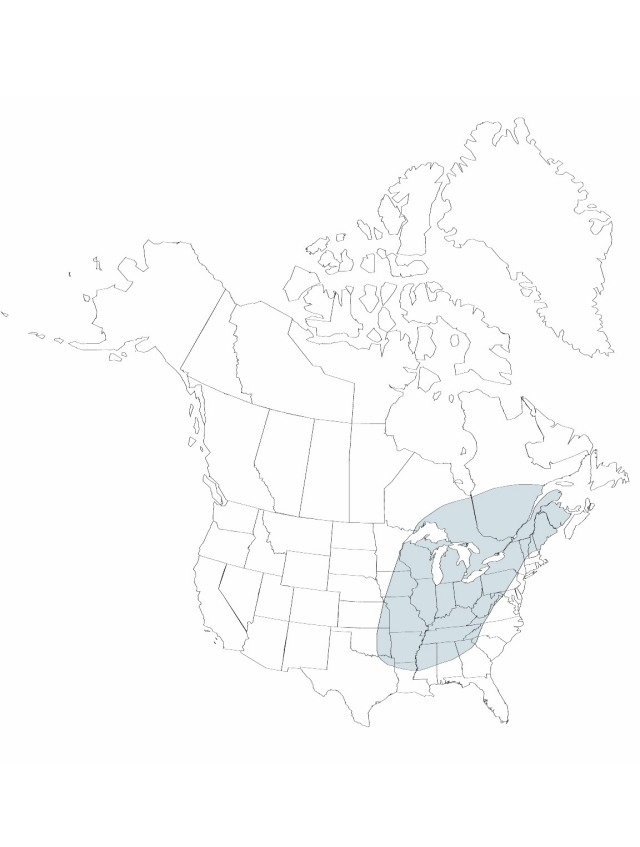Juncus anthelatus
Novon 9: 11. 1999.
Herbs, perennial, cespitose, to (3–)7–9 dm. Cataphylls 1–2. Leaves basal, 2–3(–5); auricles transparent, 2–3.5 mm at summit of leaf sheath, apex acutish, membranous; blade flat, (10–)20–30 cm × 0.5–2.3 mm, margins entire. Inflorescences 10–100-flowered, diffuse; internodes of monochasia greater than 6 mm, primary bract usually exceeding inflorescence. Flowers: pedicels 0.1–0.3(–3) mm; bracteoles 2; tepals green, lanceolate, 3.2–4.5 × 0.7–1 mm; outer and inner series nearly equal, in fruit apically erect; stamens 6, filaments 0.8–1.1 mm, anthers 0.3–0.7 mm; style 0.2 mm. Capsules tan, 1-locular, widely ellipsoid to obovoid, 2–3.2 × 1.1–1.6 mm. Seeds tan, ellipsoid, 0.33–0.556 mm, not tailed. 2n = 80.
Phenology: Flowering and fruiting spring.
Habitat: Exposed or partially shaded sites in moist or seasonally wet, sandy or clay soils
Distribution

Alta., B.C., Man., N.B., Nfld. and Labr., N.W.T., N.S., Ont., P.E.I., Que., Sask., Yukon, Ala., Alaska, Ariz., Ark., Calif., Colo., Conn., Del., D.C., Fla., Ga., Idaho, Ill., Ind., Iowa, Kans., Ky., La., Maine, Md., Mass., Mich., Minn., Miss., Mo., Mont., Nebr., Nev., N.H., N.J., N.Mex., N.Y., N.C., N.Dak., Ohio, Okla., Oreg., Pa., R.I., S.C., S.Dak., Tenn., Tex., Utah, Vt., Va., Wash., W.Va., Wis., Wyo.
Discussion
Selected References
None.